#Cultural history
Explore tagged Tumblr posts
Text
Opinions needed!
I’m on a train of thought and I need fellow passengers
Context: I’m a Belgian archaeologist, art historian and currently studying heritage. Many of my classes include museology and de-colonising museums which is relevant due to the colonisation of Rwanda, Burundi and especially Congo. Also case studies about the Benin Bronzes and the Elgin marbles.
I had to read an article about the restitution of stolen art which talked about the Benin Bronzes and the Elgin marbles. In that same timeframe, I watched a video about the last craftsmen skilled in making Benin Bronzes by Business Insider.
The craftsman in the video mentions how he applauds the Nigerian government for its efforts in trying to get the historic bronzes back to Nigeria, but what struck me the most was his plea for the same amount of attention for modern craftsmen because the craft today is disappearing.
It reminded me of the second time I visited Rwanda and went to the Ethnographic Museum in Butare (Institute of National Museums Rwanda), where there was one story about a Rwandan form of high jumping which is now lost to colonialism, and another instance was a display of Rwandan cultural artefacts AND a woman doing beadwork in the museum.
I started reflecting back to the museums I know in Belgium and to an extension the whole of Europe. We have two types of museums; the first is the art museum which is paint on canvas, the second is the (national) museum for cultural history. Optionally are archaeological museums.
It made me think (bear with me). Art museums (which include modern art in the same building) are very lovely. You always hear about it: new exhibition, new special piece required, once in a lifetime view of… “Old” and contemporary works are exhibited together. How subject A influenced subject B. Look at how style developed. Look at how subjects/clients/social constructs/… developed. Look at the beauty of Jan van Eyck and the Ghent altarpiece and now look at Bruegel and Rubens 100 years later.
Cultural history museums, as big as they are, are usually very … dead. You can visit once, see what there is to see and then not visit again in four years and everything is still very much the same. Although many museums have made an effort in saying “yes these things were required because of colonialism”, it’s usually limited to a plaque somewhere and maybe a photograph which in time was like “look how cool I am looting these things” with a description now saying “see how not cool it is to loot these things”. None of this includes excuses, restitution, exchange of art,… nothing.
Cultural history museums are sort of frozen in time. The - we don’t know what to do with ourselves- kind of exhibitions floating between “look at the cool stuff we have” and the unease of how they got them.
All the artefacts are sitting there as meaningless objects from a bygone era. As objects from a place that no longer exists, made by people that no longer exist for an audience that doesn’t exist. When I go to the Royal Museum for Central Africa near Brussels, I see many objects from predominantly Congo (DRC) with an audience that is barely worthy of being called African or coloured for that matter.
UNESCO is so adamant we preserve intangible heritage, the UN prioritises including third world countries in the equation and promote sustainable development. None of this helps in dealing with post-colonialism.
I don’t claim that any of what I’m writing below will be the solution, but I may dare to argue that some of these actions do fit within the UNESCO conventions we all massively agreed on.
Take for instance the craftsman making Benin Bronzes in modern day Nigeria. None of their work is in a museum. They have to sell their work on the roadside. Can you imagine buying a Warhol on the roadside? Protect local/traditional craftsmen with labels similar to the ones used exuberantly by World Heritage sites (f.e. Pyramids at Gizeh, UNESCO 1972’s “list”).
Cultural history museums should buy current art producing people’s work because art is not just limited to painted canvas, maybe marble statues. Art is everything. We can have old and new paintings together, but we refuse to bring old and new bronzes, marbles, baskets, instruments … together. Even going as far as excluding African modern art (which is fantastic) into western museums.
Make cultural history museums alive again. Let them show change in time too! The colonialist nation state no longer exists, why should we pretend that cultural history collections are made for colonising nations? Presenting looted artefacts like we are doing now almost feels like saying “we won over you”, we make African culture a thing from the past. Something that no longer exists, that’s why it is in a museum. It’s fictionalising different cultures, similar to people now being surprised that native Americans still exist.
We have painted artworks in museums almost immediately after they are made nowadays. Yet with “artefacts”, we insist on making them archaeological. “Old, no where to be found in practice today, no way of recovering the why’s and how’s.” They were dead and we are making them as reanimating, “saving” as much as we can.
African, Asian, South American and Native American cultures are not dead needing to be revived by a white formerly colonising museum institute.
Invite people over to display their craft, have guided tours by people from those places, let them tell the story, show what decolonisation looks like, show what reconnection looks like, support young talent... Have traditional Rwandan geometric painted art next to a contemporary Rwandan artist’s work. Have people come over to tell traditional and modern stories! Protect oral culture! Pay them the price their art is worth! If we can pay millions for Van Gogh, why not pay 100$ US for a contemporary Benin Bronze?
The west is so comfortable with having its painted artworks around the world, in hands of oligarchs, royal families, industrial magnates exchange them or have them on loan everywhere, yet with art we DIDN’T EVEN MAKE OURSELVES, we’re like “but it’s ours now. It’s here now.” The International Council Of Museums is sleeping on thousands of opportunities. Museum goers are no longer just the white, from-that-nation-derived audience. Countries are now multi-cultural, multi-colored, multi-curious. Accommodate those people. They want to see cool stuff too, they want to see old and new art from around the world too. Why not from their parent's places too?
So my basic question. Am I talking nonsense with this? Is this still a coloniser’s view? Are any of the points I made valuable? Opinions? Additions? Roast me even, this is important stuff. We need things to change. The current paradigm is broken.
#archaeology#history#art#belgium#archaeologist#colonialism#anti colonialism#decolonization#decolonialism#congo#rwanda#Burundi#benin bronzes#elgin marbles#nigeria#museum#art history#museology#museum history#cultural history#ethnography#folklore#british museum
24 notes
·
View notes
Text
I encountered a self-proclaimed witch doctor this week. Among other gifts she bestowed was this book recommendation. I got it from my local “L-eye-barry” and am on a journey further back in time than I’ve ever travelled before. I like that the framing of science and human culture starts on the first page.
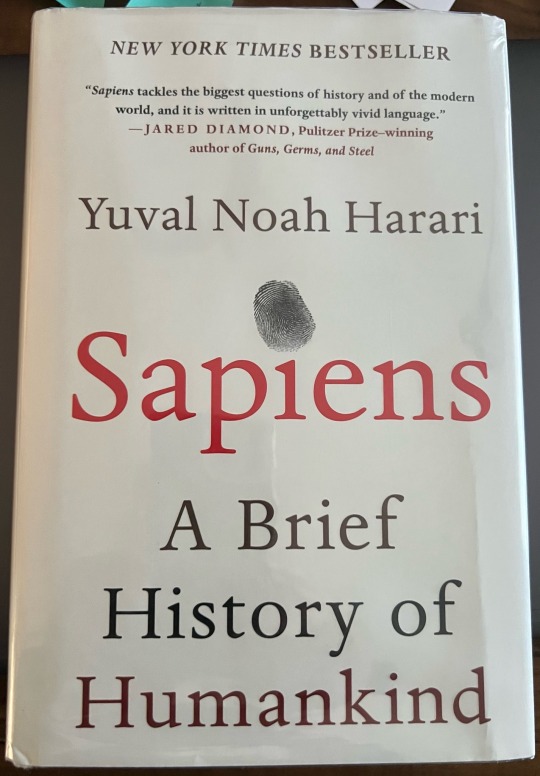

#sapiens#homo sapiens#science#universe#cultural evolution#you matter#human history#humankind#humility#humanity#physics#chemistry#biology#book recommendations#local library#checked out#reading#sipping tea#anthropology#space and time#planet earth#who am i#what am I#i am what i am#retrospective#introspective#what does it mean to be human#cultural history#still a work in progress#human evolution
20 notes
·
View notes
Text
I've been thinking about the cleanup after Helene, and while the material needs are so very important, what I'm really grieving just now is the loss of place, and the loss of story that comes with it.
See, so much of Appalachia, at least the corner of southern Appalachia I'm familiar with, is bound up by an oral history, and it's situated in a certain place and in a nexus of particular people as your neighbors. Which isn't to say Southerners don't write, or that Appalachian Southerners in particular don't write. But somehow the story changes. There's an ineffable quality that I loved, hearing scandals and ghost stories and all sorts of local accountings shared at the church youth group camp-out or family BBQ's or over beers sitting on someone's back porch.
And now there's whole small towns, places that almost don't deserve that name, that are just gone and that probably aren't coming back, or if they are, they'll be different. It seems like such a small thing to be struck by. But it weighs heavy on my heart tonight.
So if I may offer some suggestions aside from donating to the recovery (which everyone absolutely should do if they can) : Read an Appalachian story.
The Bitter Southerner is a favorite podcast of mine, though they've not updated in years. The season two episodes "Progress, Heartbreak & Art: The TVA" and "Hillbillies Need No Elegy" seem particularly on point. And the TVA one tells the stories of some real bangers of local women. Just remembering those stories makes me smile.
I've not read it yet, but the way people talk about it in that second episode makes me think "Appalachian Reckoning: A Region Responds to Hillbilly Elegy" (ed. Edward Karschner) is also worth a read. Just on general principles with J.D. Vance in the cultural bloodstream, but perhaps now more than ever.
"Talking Appalachian: Voice, Identity and Community" (Amy Clark) was more nonfiction than story, but still really interesting.
"Ghosts and Haunts from the Appalachian Foothills: Stories and Legends" (Linda Crider) has lots of good local history and .... what do we call urban legends when there's no urban at hand? rural legends? ... Particularly fun in this our season of the spooky.
"A Place Called District 12: Appalachian Geography and Music in The Hunger Games" (Thomas Paradis) This one I haven't read yet, but judging from this interview it might be interesting for people wanting to tap into the region through more fannish lenses.
Honestly, I'm grasping a little at straws here. If anyone has anything worth reading, please let me know so I can add it to the list.
Also, at the risk of being too flippant, I'm wondering if it might be time to take a crack at reading Vulgarweed's and htebazytook's "The Bone Fiddle." Not that there's ever a bad time, I suppose.
Seriously. Seek out these stories if you can, always but especially now, and if you have any good recommendations along those lines let me know.
20 notes
·
View notes
Text
instagram
20 notes
·
View notes
Text

Fascinating article on Pamela Colman Smith, the artist who did all the gorgeous, richly symbolic designs for the widely used "Raider-Waite" Tarot deck and didn't receive credit or appropriate financial compensation for it.
19 notes
·
View notes
Text
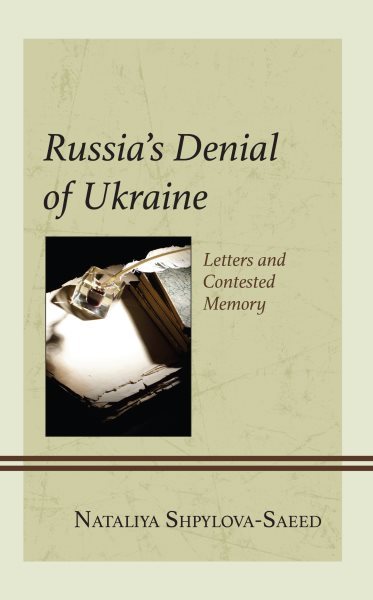
"This book is one of the best studies written in any language about the “memory wars” led by imperialistic Russia against Ukraine since the early nineteenth century. This book, based on a meticulous research of the letters, written by the iconic figures for Ukrainian identity (Mykola Hohol, Taras Shevchenko, Lesia Ukrainka, Ivan Franko, and Volodymyr Vynnychenko), is a fascinating historical-philological study, which represents a unique scholarly analysis of the very important and sometime forgotten (especially by mainstream historians) history of the contested memory of Ukraine and Ukrainian national identity vs. the imperial Russian/Soviet attempts to suppress and replace them with the Russian/Soviet cultural models. This book will be must-read for any student of Ukrainian history and literature."
19 notes
·
View notes
Text






Book 566
The Book Cover in the Weimar Republic
Jürgen Holstein, ed.
Taschen 2015
Between the first and second World Wars, the Weimar Republic in Germany was renowned as an intellectual and cultural hub. Centered around Berlin, the Weimar Republic introduced groundbreaking advances in design, music, philosophy, art, and literature, and along with this came equally groundbreaking book cover designs. Culled from the remarkable collection of Jürgen Holstein, this book presents 1,000 of some of the most forward-thinking book jacket designs ever produced. During the brief fourteen years of the Republic, graphic design and typography flourished and bold experimentation became the norm, only for most of the work to be suppressed, burned, or driven out with the rise of National Socialism. So, not only is this a stunning book, but it is also an important reference of a significant chapter of cultural history.
#bookshelf#personal collection#personal library#books#library#bibliophile#book lover#illustrated book#booklr#graphic design#the book cover in the Weimar republic#jurgen holstein#taschen#cultural history
10 notes
·
View notes
Text
Why human culture became monogamous
Let me talk about one thing: The reason for the prevailance of monogamy these days. Because I think a lot of people are not quite aware of this.
If you are monogamous, this is not a slight against you - it is simply about the history of it.
Because here is the thing: Homo Sapiens as a species is not monogamous. And all that we can say about our biology so far is, that we are not even a seasonally monogamous species.
To explain: There are species, that are monogamous, or seasonally monogamous. In a monogamous species, animals mate for life. And once they have mated, they will not be interested in any other animal anymore. We actually see this behavior most often in different birds, like some swans and penguins.
There are also species, who are seasonally monogamous. Again, this is mostly seen in birds. Seasonally monogamous species mate once per mating circle and then again do not experience any interest in potential other partners.
The reason that this is mostly seen in birds is probably an evolutionary adaption based on the fact that with birds at least one partner needs to keep the eggs warm, so that the other partner needs to bring in food to the nest.
Homo Sapiens meanwhile are not that. Homo Sapiens do experience attraction to people other than their current partner. And in fact there is a lot of biological evidence, that biologically speaking we have evolved to live in groups and within these groups just fuck whoever.
Biologists have pointed out that the fact that our bodies produce oxytocine in response to sex, which builds trust and produces generally positive feelings towards others. This does seem like an evolutionary adaption to produce closer knit groups.
We can say this, because we can see the same in bonobos - one of our closest relatives in the animal kingdom.
Biologists also assume, that our moaning during sex is actually an adaption to invite others to join us.
And of course we do just know that we will just randomly fall in love and feel attracted to other people independent of our romantic status right now.
So, why is our society geared towards monogamy?
The answer is simply: Patriarchy.
See, monogamy is mostly a result of the patriarchy. Which is also why monogamy mostly sprang up in patriarchal cultures, while not being that prevalent in matriarchal or more egalitarian cultures.
Patriarchy only emerged once we settled down and started owning land. Why exactly it sprang up, we do not really know, but we do know that it ran into one problem: It relied on the patrilinear succession and inheritance. And that is a bit more complicated than matrilinear succession, right?
Because a woman will always know who her children are. It is quite easy to know, given that the woman is the one pressing the child out of her uterus.
A man meanwhile? Well, he cannot know who his children are in a world before paternity tests. At least not unless he makes sure that the woman birthing the child has slept with nobody but him. And hence: Monogamy. At least enforced monogamy for women.
This is also what led to all those other ways of men controlling women. Controlling how they dress and shaming them for whatever thing they might do, that men find attractive. Because it all has to do with this patriarchal fear of not knowing whether a child is yours or not.
Of course it has to be noted that originally this only led to polygyny. So a man, who would take several wives, but control the wives so that they would not sleep with another men. But we do assume these days, that the reason it led to monogamy was, that polygyny made the societies too instable, because it would naturally mean, that some men would not have any women and that was not good.
Hence... Monogamy was what people started to settle on more and more. Including this idea that men somehow owned women.
If you feel more comfortable with monogamy... Sure, fine. Good for you. But I think we really should speak more openly about the fact, that monogamy is something that is based completely in the patriarchy and in the end mostly exists to suppress women. For no other reason.
49 notes
·
View notes
Text
23.2.2025
I think it's time to go academic machine mode today again.
🪻detailed research plan draft 1 done
🪻 and sent to doctoral advisor
🪻100 pages of "forgotten radicalism of european enlightenment"
🪻 30 min of korean (i'm cooked if i don't start practicing)
🪻draft of tuition application
🪻 unlimited coffee day i got a free pass if it means i'll get all of this done

It's 13.29 atm, time to get more coffee and get things done (see you on the other side)
#university student#literature student#university#uni student#studyblr#studyblog#academia#studying#literature analysis#phd life#phdblr#phd research#phd student#chaotic academia#coffee fueled insanity#productivity#study motivation#study inspiration#cultural history#cultural studies#academic machine
4 notes
·
View notes
Note
Was the Comics Code as bad as the Hays Code?
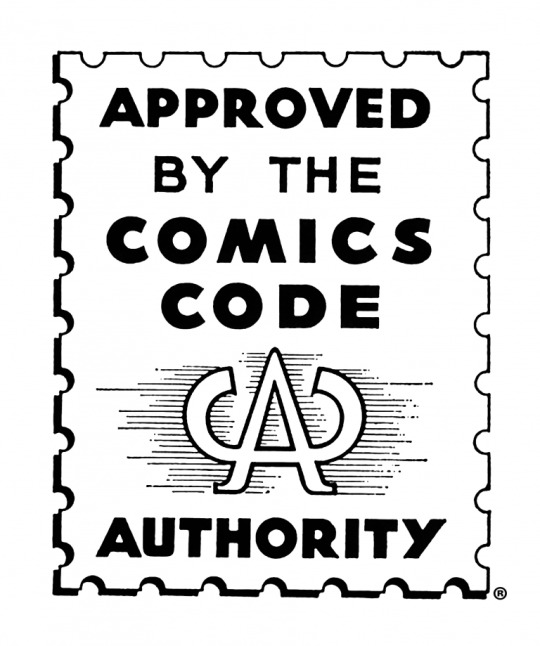
That's a really good question!
I suppose it depends on what you mean by "as bad" - are we talking about the overall impact of the Code on American pop culture or are we talking about the actual content of the Code and what it banned and/or mandated in terms of artistic expression?
I've written a little bit about the Hays Code here, but my main focus was on subtextual judaism in Hollywood generally rather than what the Code was and what its impact on American cinema was.

So what did the Hays Code actually include?
One of the few positive things you can say about it is that the men who devised it were quite clear and forthright about what would and wouldn't be allowed, in comparison to the vagueness and inconsistency of the modern MPAA. So here's the list of what couldn't be shown:
Pointed profanity—by either title or lip—this includes the words God, Lord, Jesus, Christ (unless they be used reverently in connection with proper religious ceremonies), Hell, S.O.B., damn, Gawd, and every other profane and vulgar expression however it may be spelled; (You'll notice that the Code is very much a snapshot of the transition from silent movies to "talkies," with the discussion of how profanity is spelled as well as produced via "lip.")
Any licentious or suggestive nudity—in fact or in silhouette; and any lecherous or licentious notice thereof by other characters in the picture;
The illegal traffic in drugs;
Any inference of sex perversion; (i.e anything having to do with LGBT+ people and culture. For more on the impact of the Hays Code on the LGBT+ community, see the excellent documentary the Celluloid Closet.)
White slavery; (the 1920s version of sex trafficking, but with added racism!)
Miscegenation;
Sex hygiene and venereal diseases;
Scenes of actual childbirth—in fact or in silhouette;
Children's sex organs;
Ridicule of the clergy;
Willful offense to any nation, race or creed; and (this one was really honored in the breach more than the observance when it came to nations, races, and creeds of non-dominant groups in society.)
The following things could be shown, but "special care be exercised in the manner in which the following subjects are treated, to the end that vulgarity and suggestiveness may be eliminated and that good taste may be emphasized:"
The use of the Flag;
International Relations (avoid picturizing in an unfavorable light another country's religion, history, institutions, prominent people and citizenry); (again, depended a lot on what country you're talking about.)
Arson;
The use of firearms;
Theft, robbery, safe-cracking, and dynamiting of trains, mines, buildings, et cetera (having in mind the effect which a too-detailed description of these may have upon the moron); (I guess the idea was that the MPPDA believed very strongly in the idea that media could affect people's behavior through imitation, but the use of the word "moron" gives me eugenics vibes.)
Brutality and possible gruesomeness;
Technique of committing murder by whatever method;
Methods of smuggling;
Third-Degree methods; (i.e, torture)
Actual hangings or electrocutions as legal punishment for crime; Sympathy for criminals; (this was a big one; Hollywood had done very well from gangster films, so a lot of creators had to do some careful threading of the needle to keep the genre alive. One dodge that they came up with was that they would have a duplicate "final reel" in which the gangster would have their inevitable comeuppance, and then remove the final reel when the censors had left the theater. Very popular with white rural teens.) Attitude toward public characters and institutions; (again, Hollywood shifting from being anti- to pro-establishment.)
Sedition;
Apparent cruelty to children and animals;
Branding of people or animals;
The sale of women, or of a woman selling her virtue;
Rape or attempted rape;
First-night scenes; (i.e, wedding nights)
Man and woman in bed together; (hence the eventual TV practice of showing married couples in separate beds in the 50s)
Deliberate seduction of girls;
The institution of marriage;
Surgical operations;
The use of drugs;
Titles or scenes having to do with law enforcement or law-enforcing officers;
Excessive or lustful kissing, particularly when one character or the other is a "heavy".
So in general, we can say that the Hays Code was extremely sex-negative, very concerned about crime and anti-establishment thinking, sexist, racist, and homophobic, and in general afraid of offending anybody.
So what about the Comics Code Authority?
So this is what the Comics Code looked like in 1954:
Crimes shall never be presented in such a way as to create sympathy for the criminal, to promote distrust of the forces of law and justice, or to inspire others with a desire to imitate criminals. If crime is depicted it shall be as a sordid and unpleasant activity.
Policemen, judges, government officials, and respected institutions shall never be presented in such a way as to create disrespect for established authority.
Criminals shall not be presented so as to be rendered glamorous or to occupy a position which creates a desire for emulation. In every instance good shall triumph over evil and the criminal punished for his misdeeds.
Scenes of excessive violence shall be prohibited. Scenes of brutal torture, excessive and unnecessary knife and gunplay, physical agony, the gory and gruesome crime shall be eliminated.
No comic magazine shall use the words "horror" or "terror" in its title.
All scenes of horror, excessive bloodshed, gory or gruesome crimes, depravity, lust, sadism, masochism shall not be permitted.
All lurid, unsavory, gruesome illustrations shall be eliminated. Inclusion of stories dealing with evil shall be used or shall be published only where the intent is to illustrate a moral issue and in no case shall evil be presented alluringly, nor so as to injure the sensibilities of the reader.
Scenes dealing with, or instruments associated with walking dead, torture, vampires and vampirism, ghouls, cannibalism, and werewolfism are prohibited.
Profanity, obscenity, smut, vulgarity, or words or symbols which have acquired undesirable meanings are forbidden.
Nudity in any form is prohibited, as is indecent or undue exposure. Suggestive and salacious illustration or suggestive posture is unacceptable.
Females shall be drawn realistically without exaggeration of any physical qualities.
Illicit sex relations are neither to be hinted at nor portrayed. Rape scenes, as well as sexual abnormalities, are unacceptable.
Seduction and rape shall never be shown or suggested.
Sex perversion or any inference to same is strictly forbidden.
Nudity with meretricious purpose and salacious postures shall not be permitted in the advertising of any product; clothed figures shall never be presented in such a way as to be offensive or contrary to good taste or morals.[16]
You'll notice the similarities when it comes to the Codes' attitude to sex, sexuality, crime, and symbols of authority - so to answer the first part of your question, I would say the CCA was pretty similar to the Hays Code (in part because Charles F. Murphy, who drew it up, was deeply unoriginal and basically cribbed off the Hays Code throughout).
However, there are also some significant areas of difference that have a lot to do with the unique circumstances of the 1950s moral panic over comics. See, in the 1950s, superhero comics were considered deeply uncool and old hat - they had been huge in the 40s during the war, but by the 50s the biggest genre in comics were horror, crime, and romance comics (with cowboy comics bringing up the rear). To quote myself from another post:
"This gave rise to a moral panic in the 1950s, although more accurately it was part of the larger moral panic over juvenile delinquency. The U.S Senate established a Juvenile Delinquency Subcommittee of the Judiciary Committee in 1953 to investigate the causes of juvenile delinquency and comics became a major target. While Wertham’s book is best known today for its assertions that Batman and Robin were teaching young boys to be gay and Wonder Woman was teaching young girls to be lesbians, the main focus of the Subcommittee [edit mine: and Wertham's academic work] was on horror and crime comics for their depiction of sex, violence, and “subversive” attitudes to law and order."

The CCA made it impossible to publish two of the most popular genres in the industry for a generation (the CCA relaxed its stance on horror stuff a bit in the 70s, which is why Marvel trend-chased werewolves and vampires the moment they could get away with it), which not only scrambled the medium (and potentially created space for the Silver Age of superhero comics to flourish) but drove the former titan EC Comics practically out of business. (Indeed, William Gaines of EC Comics believed that the CCA had been specifically worded to drive him out of business.)
So in some ways, the CCA was worse.
#subtexual judaism#cultural history#film history#hays code#comics#comics meta#comics code authority#cinema
306 notes
·
View notes
Text


For almost 10 years between 1929 and 1938 theoretician and architectural historian Sigfried Giedion worked on a book project that only peripherally dealt with architecture and eventually also remained unpublished: „Die Entstehung des heutigen Menschen“, the emergence of modern-day man. It was an ambitious project spread over approximately three volumes dealing with different topics related to the emergence of modern-day man. In Giedion’s archive at the ETH Zurich the material related to the book project has survived and Sokratis Georgiadiscin collaboration with Almut Grunewald edited and annotated them. The result is has recently published by @gtaverlag
In the first volume, entitled “Construction and Chaos”, Giedion recounts the discoveries and inventions from the 17th century up to the First World War, effectively the emergence of the industrialized world and the human being within it. It is the most complete of the three volumes and through Georgiadis’ introductory text receives additional political, sociological and ultimately intellectual context that especially with regard to the Industrial Revolution is helpful.
In the second volume Giedion finally deals with architecture, namely in the form of social building tasks, and thus one of the most discussed topics of modern architecture in the first half of the 20th century. For this Giedion collected examples of German, French and British housing designs, a hint at his overall focus on Europe.
In the shortest fragment, dealing with the prevailing taste, Giedion takes to the popular art of the 19th century and reveals his bourgeois perspective on his research subject.
Although sympathetic with Giedion, Georgiadis keeps his distance and critically discusses his conceptions and also uncovers his shortcomings, e.g. the underlying assumption that a division between thought and feeling characterized the industrialization: Georgiadis proves that this notion is insufficient to explain the actual hardships of the industrial labor forces and typical of a bourgeois point of view. On the other hand the book closes a gap in Giedion’s list of publications and due to its unfinishedness offers interesting perspectives on a major thinker’s trains of thought and research methods. A fascinating read, most of all because of Georgiadis’ brilliant annotations.
20 notes
·
View notes
Text


Architecture and Monuments: Great Sphinx of Giza - Egypt
The Great Sphinx of Giza is a limestonestatue of a reclining sphinx, a mythical creature with the head of a human and the body of a lion. Facing directly from west to east, it stands on the Giza Plateau on the west bank of the Nile in Giza, Egypt.
The Sphinx is the oldest known monumental sculpture in Egypt and one of the most recognizable statues in the world. The archaeological evidence suggests that it was created by ancient Egyptians of the Old Kingdom during the reign of Khafre (c. 2558–2532 BC).
A special feature of the Sphinx is its actual lack of a nose. The circumstances surrounding it about being broken off are uncertain, but close inspection suggests a deliberate act using rods or chisels. Contrary to a popular myth, it was not broken off by cannonfire from Napoleon's troops during his 1798 Egyptian campaign. Its absence is in fact depicted in artwork predating Napoleon and referred to in descriptions by the 15th-century historian al-Maqrīzī.

It is unknown how the name of the Sphinx came to be, due to propably multiples origins, for example of its creator of the Old Kingdom, as the Sphinx temple, enclosure, and possibly the Sphinx itself was not completed at the time, and thus cultural material was limited. In the New Kingdom, the Sphinx was revered as the solar deity Hor-em-akhet (English: "Horus of the Horizon"; Hellenized: Harmachis)
The commonly used name "Sphinx" was given to it in classical antiquity, about 2,000 years after the commonly accepted date of its construction by reference to a Greek mythological beast with the head of a woman, a falcon, a cat, or a sheep and the body of a lion with the wings of an eagle (although, like most Egyptian sphinxes, the Great Sphinx has a man's head and no wings). The English word sphinx comes from the ancient Greek "Σφίγξ" (transliterated: sphinx) apparently from the verb σφίγγω (transliterated: sphingo / English: to squeeze), after the Greek sphinx who strangled anyone who failed to answer her riddle.

Over the centuries, writers and scholars have recorded their impressions and reactions upon seeing the Sphinx. The vast majority were concerned with a general description, often including a mixture of science, romance and mystique.
From the 16th to the 19th centuries, European observers described the Sphinx having the face, neck and breast of a woman. Examples included Johannes Helferich (1579), George Sandys (1615), Johann Michael Vansleb (1677), and some others following it. Most early Western images were book illustrations in print form, elaborated by a professional engraver from either previous images available or some original drawing or sketch supplied by an author, and usually now lost. Seven years after visiting Giza, André Thévet (Cosmographie de Levant, 1556) described the Sphinx as "the head of a colossus, caused to be made by Isis, daughter of Inachus, then so beloved of Jupiter". He, or his artist and engraver, pictured it as a curly-haired monster with a grassy dog collar. Athanasius Kircher, however, depicted the Sphinx as a Roman statue
#super wings#super wings cultural#ancient monument#historical architecture#cultural monument#cultural history
12 notes
·
View notes
Text
Feast Days: Martinmas

Anthony Van Dyck ~ "St. Martin Dividing His Cloak" (c.1618)
Happy Martinmas!
Today marks the feast day of St. Martin of Tours, who was bishop there from 371 CE until his death in 397 CE. He is the patron saint of many things, including: against poverty, against alcoholism, the poor, cavalry, Buenos Aires, quartermasters, wool-weavers, soldiers, and tailors, as well as wine growers, makers, and sellers. Whew! He must be very busy.
Keep reading for info about his life, a snitch goose, where the word 'chapel' came from, and how to tell what the weather will be like at Christmas.
His Life
Much of what we know about Martin comes from his hagiographer, Sulpicius Severus, who includes some 'artistic license' that is common in chronicles of the time, and therefore must be taken with a grain of salt.
Martin was born anywhere from 316-336 CE in Savaria, now Szombathely, Hungary. His father was a senior officer in the Roman Army, and as such was given land in northern Italy for his retirement. At the age of 10, Martin attended a Christian church against the wishes of his parents, and became interested in Christianity. Because of his father's status as a veteran, he was required to join the cavalry at 15. Dates surrounding his military service are shaky, but Severus states that, during his time stationed in Gaul, he was riding on horseback when he encountered a poor man with threadbare clothes. Having compassion on him, Martin used his sword to cut his own woolen cloak in two and gave the other half to the man. That night, Jesus Christ appeared to him in a dream, surrounded with angels and wearing half of the cloak. After this, Martin was baptised as a Christian. Though other miracles of his are recorded, this tale is the one most associated with Martin's life. It fits in with depictions of God or his angels in disguise as a beggar, traveller, &c., and is also a narrative found in many other religions and traditions. (Biblical examples include Abraham feeding the three angels in Genesis 18).
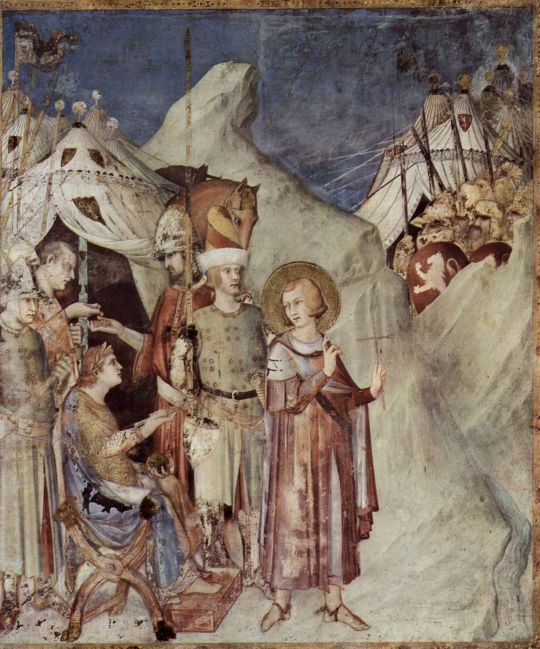
Martin dips from the army ~ fresco by Simone Martini (c.1320s)
With his new faith now firmly a part of his life, Martin decided to leave the army. Before a battle near modern-day Worms, Germany, Martin went before Emperor Julian and refused his salary, saying, "I am the soldier of Christ: it is not lawful for me to fight." They threw him in prison for this, but due to ye olde extenuating circumstances, he was released and discharged without further incident.
Martin made his way to modern-day Tours in France and declared himself a hermit, becoming a disciple and friend of Hilary of Tours. Because Christianity was Not OK™ in the Roman Empire, he and Hilary faced a lot of discrimination, including corporal punishment and exile. After converting his mother to Christianity and having numerous adventures, like living pretty much alone on an island, he and Hilary settled down in and around Poitiers, where Martin established Ligugé Abbey. It is the oldest known monastery in Europe! Martin made it his home base while he preached throughout western Gaul.

In 371 CE, the bishop of Tours died, and Martin was considered a good candidate for a successor. However, he liked living as a hermit and monk, and they resorted to tricking him into coming to Tours and then forced him to become the bishop. Legend holds that he tried to hide in a barn, but a honking goose gave him away. Hence he is the patron saint of geese, which I think is adorable. Martin proved true to his hermit ways, living very simply in huts with his monks. He established a rudimentary parish system, through which he visited different Christian communities and established monasteries. He was very determined in his efforts to convert local Pagans, as well as protect Christian institutions from unfriendly sects in the area, and in some cases he was successful. He died in 371 CE, already a venerated man. His popularity was ensured by his adoption by various French royals and by the Third Republic as a national symbol.
Martin has been portrayed by several famous artists, including Van Dyck, Peter Bruegel the Elder, and El Greco. He is usually portrayed on horseback, dividing his cloak for the poor man, though occasionally he can be seen riding a donkey. This references another story in his life about the time where he met the Devil and outwitted him. It also connects him to the image of Jesus riding a donkey into Jerusalem (recounted in Mark 1:1-11).
Martinmas and its Traditions
Martin lent his legacy to a host of English words and phrases, including those relating to the word 'chapel'. Temporary buildings that held the relic of his cloak (cappa in Latin) were referred to as cappella, and hence the word 'chapel' was born. A similar thing happened to the word 'chaplain', which derived from the word for the priest in charge of the cloak.
Though the Anglo-Saxon church did celebrate St. Martin to some extent, more references to Martinmas celebrations begin to crop up after Norman Conquest of 1066, when the Frenchman William the Conqueror invaded England. Supposedly, he promised to build an abbey dedicated to Martin if his invasion of England was successful. William was very likely familiar with the early Mediaeval association of the battle-hungry rulers of France with St. Martin, and was possibly responsible for his increased popularity in England.
In England and Scotland, and indeed through much of western Europe, Martinmas became a celebration marking the culmination of the harvest and the beginning of winter. From the late fourth century through the late Middle Ages, it also served a similar purpose to Mardi Gras/Carnivale: a period of fasting was ordained for the day after Martinmas through Christmas, so Martinmas was your last chance to stuff your face for a long time! (This period later became Advent, though with much laxer rules). As such, it was a time for feasting, celebration, bonfires, getting really drunk, and even events such as bull-running, as in Stamford, Lincolnshire. It was also a time for the end-of-harvest tasks, such as sowing winter wheat and slaughtering pigs and cattle. An old English saying goes, "His Martinmas will come, as it does to every hog", meaning, "they will get their comeuppance" or "everyone dies someday". Due to Martin's association with geese, some celebrated with a roast goose, but in Britain particularly it was also popular to eat salted pork or beef. For those not rich enough to have a goose, a duck or hen would also suffice. Other traditional fare included black pudding, haggis, and the first wine of the season.
On the business side of things, Martinmas served as a quarter day in Scotland and in parts England. A quarter day was one of four days on which major legal business was conducted. Servants and labourers would be hired or let go, rent was paid, contracts would begin or end, &c. Hiring fairs would be held for agricultural labourers seeking employment, and there would also be entertainment, food, trading, and other scenes of merriment. One of the most famous Martinmas fairs was at Nottingham in England, which lasted eight days.
Like many other English holidays, there is weather folklore associated with Martinmas. To have a warm fall and winter is to have a "St. Martin's Summer". If Martinmas proves an icy day, Christmas (or the rest of the winter) will be very warm. The rhyme puts it more pithily: "If the geese at Martin's Day stand on ice, they will walk in mud at Christmas".
If you stand at the back of the church and observe the congregation on Martinmas, those with a halo of light around their heads will not be alive by next Martinmas.

Interior of St. Martin-in-the-Fields, with a funky window!
The church of St. Martin-in-the-fields in Trafalgar Square in London is named after Martin. Many people commemorated there are associated with his anti-war sentiments -- these include Vera Brittain, a memoirist and pacifist; and Dick Sheppard, founder of the Peace Pledge Union. The church also supports houseless and vulnerably housed people.
The holiday gradually fell out of practice due to the English Reformation (when England split from the Catholic Church throughout the 1500s) and the Interregnum (Puritan republican government, 1649-1660). The observance of Armistice Day on the same day largely overshadowed the holiday in the UK, though many regions in Western Europe still take part in traditional festivities.
Martinmas is celebrated on 12 October in the Eastern Orthodox Church.
If You're Still Interested...
"The Life of St. Martin" by Sulpicius Severus himself! (pdf)
Pot Roast Martimas Beef Recipe by Chatsworth House
Sources
Historic UK
Wikipedia (Martin of Tours)
Wikipedia (St. Martin's Day)
Fisheaters.com
The Encyclopedia of Saints by Rosemary Ellen Guiley
"Medieval English "Martinmesse": The Archaeology of a Forgotten Festival" by Martin Walsh (via jstor)
#feast day series#feast day#martinmas#st martin#martin of tours#history#cultural history#english history#british history#saints day#folk history
24 notes
·
View notes
Text
We have a little something planned for tonight ;) Let's see if it works out the way we want it to. In the meantime, I've collected a few probs, including this lovely book that I don't want to withhold from you.
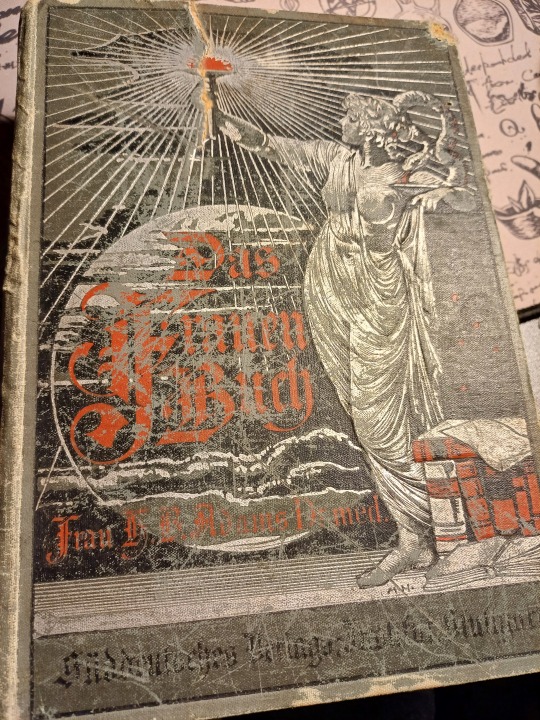
It's by Hope Bridges Adams (-Lehmann), the first German woman to be allowed to take the state examination in medicine. Unfortunately, my copy is rather battered as it has been used a lot. (In another life I once studied cultural history, with a focus on female sexuality & gender in the 19th century, hence perhaps the one or other Maidchen lyrics and my dedication to Lisztomania ;)) And yes, we are planning a song about her. ;)
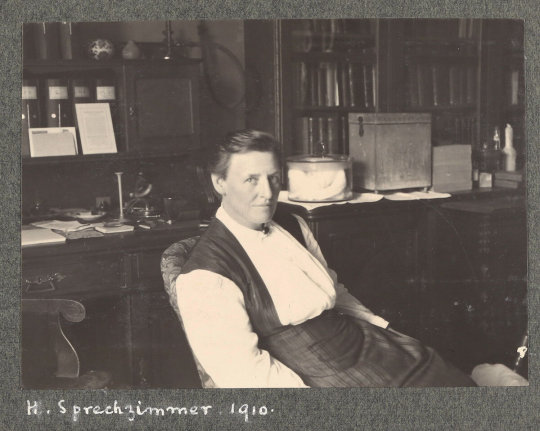
H.B. Adams was not only a doctor, but also a women's rights activist. She had a really difficult time at university, was constantly bullied by her male fellow students and cut off her hair and wore men's clothes so as not to attract too much attention. When she campaigned against the ban on abortion in 1914, her licence to practise medicine was summarily revoked for a time, and her reputation was completely destroyed afterwards.
Girls can be anything. Unless it's the 19th century. Or the upcoming weeks in 2025...
This book, ‘The Women's Book. A medical guide for women in the family and for women's illnesses’, was published in 1899.
Tag yourself ;) :
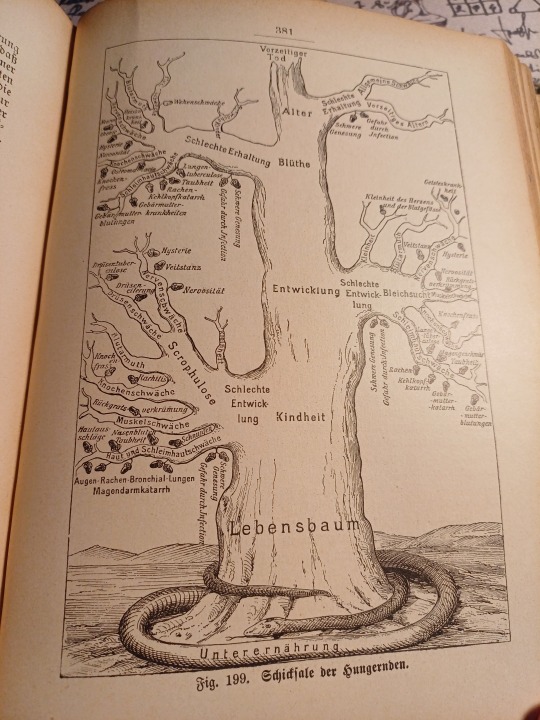
And although it is of course characterised by medical knowledge of the time, it is very progressive.


"Enthusiasts, fanatics and hypocrites demand the use of abstinence for reasons we can refrain from discussing here. Reasonable people do not bother with such proposals. They know that nature is a force that can no more be overthrown by theories than a mountain can be overthrown by a swarm of gnats. Least of all does the sexual instinct submit to the compulsion of any academic or religious determination. No religion, no philosophy and not even necessity has been able to suppress it. And do we want to be smarter than nature? If we imagine we are, her revenge will soon teach us how little we have understood her. If we really do succeed in depriving the species of its rights, we will sacrifice our happiness and our peace."
Bäm, burn your corset! Or not! Your choice!
#band diary#female history#female hysteria#19th century#victorian#history of medicine#girl power#women's rights#feminism#gender roles#gender studies#cultural history
3 notes
·
View notes
Text

Langmead has crafted a history of a sport (or is it entertainment?) that feels definitive and engrossing. The book also fulfills the promise of its subtitle, introducing a large cast of wholly unique characters that rounds out this entirely bombastic read.
#uwlibraries#history books#american history#history of sports#cultural history#history of entertainment
7 notes
·
View notes